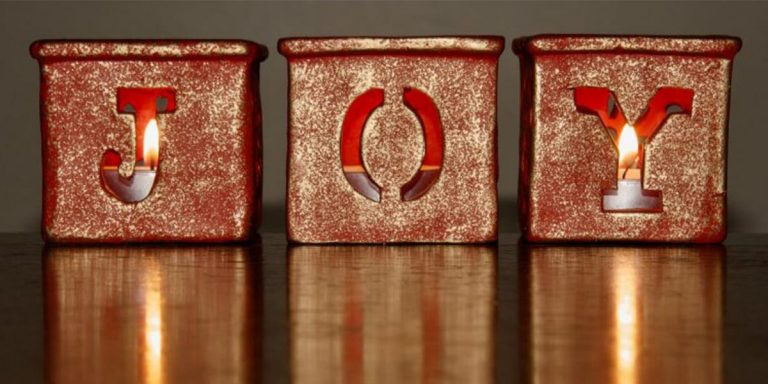
Advent started this year on Sunday, the 1st of December. In Catholic Europe, Advent ́s longstanding tradition involves a wreath with some candles, possibly a “calendar” with chocolates, a decorated pine tree and dazzling Christmas lights.
So, what is Advent? Etymologically, advent comes from the Latin ad+venire, which means “To come to,” or “to come toward.” Advenire is the root for the Latin word “Adventus” which means “Arrival.”
Advent is the season of arrival: The arrival of Christ in our hearts, in the world, and following the notion of God’s plan for our salvation.
Advent is a season in the Church’s life intended to renew the experience of waiting, and longing, for the Messiah. Though Christ has already come into the world, the Church invites us to renew our desire and open the door of our life to the Lord.
Advent is the expectant waiting, hopeful anticipation and cheerful preparation.
A recap of the concepts that advent represents from the Catholic understanding:
- Commemorating the Birth of Jesus;
- Preparing for Christ’s return;
- Welcoming God into our everyday lives;
- Reminding us there is Joy in waiting (Rejoice);
- Start of the Church’s Liturgical Year;
- Preparing decorations to make a cosier environment to receive Jesus;
- Enjoying life’s blessings;
- Waiting, Hoping, Praying;
Contrarily, Advent is not about:
- Stressing about Christmas reunions and preparations;
- Spending as much as possible;
Regarding the decorations, the colours of the candles chosen to represent these four weeks process are three purple candles and one pink. The three purple candles represent the penance waiting Sundays and the pink colour is for Gaudete Sunday, the third Sunday and it means Rejoice. Do not lose Heart or Hope, the expected guest has almost arrived*.

Advent and the Society of Jesus
“With Advent, we mark the beginning of the Church’s liturgical year. Advent is a season of waiting with hopeful expectation. Although we naturally look towards Christmas and the birth of Christ, the liturgy also invites us to see with the eyes of faith to the end of time, to Christ’s expected Parousia (Greek for arrival).
[…] Advent locates us at a number of different levels. It draws us into the mystery of God who acts in history but is not bound by it. We are invited to contemplate God whose promises are embedded within our time and history, shaping it and slowly bringing it to fulfilment in unexpected ways and through the least expected people. In Advent we encounter God who never ceases to surprise us. The liturgy of Advent is a school in which we learn to listen and to wait with expectation and with hope. Through that contemplative listening to scripture our imagination is enlarged: we can see how God does not abandon us or our world but continues with inexhaustible patience to call us to the new life of the kingdom.
In the season of Advent, we grow. Our hearts are enlarged to embrace the suffering of the world in God’s love. In such a love, we do not get trapped in despair and powerlessness because we know we have a Saviour, ‘Emmanuel’. Advent is the time of opening ourselves to the risk of hope, and the power that it gives us to see new possibilities, to be renewed, to let the life that the Holy Spirit who has been breathed into us become our life. The Lord has come, now in our time, and for all time. In the Contemplation on the Incarnation, Ignatius invites us to look upon the whole world in all its times, places, people and circumstances (Sp. Exx. § 101 ff) […]
The UAPs are part of our own process of renewal. They will become important ways into our processes of discernment. If they are to touch us in these ways, it would be good if we could first let them become part of our prayer. The liturgical season of Advent gives us a natural opportunity for this. With Lent, it marks out a time when the Church desires to prepare herself to enter more deeply into the mystery of Christ’s incarnation and his work of redemption. In Advent we can let our prayer illuminate the UAPs, asking that we may be open to whatever graces of renewal, insight and understanding God wishes to offer us. What follows are suggestions for individual and community prayer. In so far as they help, then they will serve our purpose. But they may also stimulate further ideas and reflection at a personal, community or group level.
Some suggestions for praying with the UAPs during Advent:
- Take one UAP as the theme for each week in Advent.
- Let the Advent readings for the week suggest a UAP. For each Sunday one of the UAPs is suggested, but you may find that the readings take you to another UAP and that, too, is fine ** . […] ”

* Source: Flynn, J. D. (2019, November 22). What is Advent, anyway? A CNA Explainer. Catholic News Agency. Retrieved from https://www.catholicnewsagency.com/news/what-is-advent-anyway-a-cna-explainer-54470.
** Source: Jesuits in Europe
Adaptation by Alba Requejo
Communication Assistant 2020

